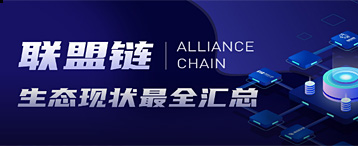-
Applications Versus Infrastructure, Where's the Next Alpha for Web3?
 joint
joint 2022-09-21
2022-09-21 2953
2953 Tech
Tech
-
Summary:Whether to invest in Web3 applications or infrastructure, bosses with surplus in the primary market fret. The next cycle is all about capturing the "killer app" and putting it into Web3's Tencent or Bytedance.
Whether to invest in Web3 applications or infrastructure, bosses with surplus in the primary market fret. App advocates argue that times have changed, and that what's lacking is not a ghost town of public infrastructure, but an app that actually gets users and money, so the next cycle is all about capturing the "killer app" and putting it into Web3's Tencent or Bytedance.
Application: Alpha is the killer app
"Application" people believe that the era of public chain and other infrastructure as Alpha has passed and gradually become the Beta of the industry. The new Alpha opportunity lies in the application layer.
The fat protocol theory is essentially a summary of the interaction between the protocol and the application, because any Dapp built on top of the protocol needs the protocol's native Token to support any interaction within the Dapp, and the bifurcated application is simpler than the bifurcated protocol. However, with the advent of the expansion era, the new public chain/Layer2 has emerged, and the competition between protocols has led to lower Gas costs. Dapps are no longer held by a single public chain, and can be deployed in multiple chains.
In terms of the way of capturing financial value, the application layer is more direct. For example, DEX may charge a processing fee of $500 for an on-chain transaction and pay a Gas fee of $0.50. The financial value is more deposited in the application layer.
According to CryptoFees, seven of the top 10 revenue projects are currently apps, and even Uniswap has been making more money than Ethereum itself in the past. In the future, apps making more money than the agreement will be the norm.
WEB3
On the other hand, most protocol value accumulation comes from MEVs, and many applications have begun to design methods to reduce this MEV value capture.
So the opportunity for the next cycle is -- super Web3 apps, consumer apps that actually get users and money, and blue chip NFTS like BAYC can fall into this category.
When a Web3 application has a large number of real users who have already paid for the application, it can "do whatever it wants" and build its own infrastructure.
First, apps can keep value in the system by building their own DEX and NFT MarketPlace. For example, DOOAR, a StepN built-in exchange, became the "Solana Largest DEX" shortly after its launch, and its core revenue comes from in-app NFT market transaction royalties and fees.
Secondly, in the era of blockchain modularity, it is no longer difficult to send chains with one click. Whether it is like Axie Infinity forking an Ethereum side chain Ronin, or DYDX using Cosmos-SDK to build its own chain, DefiKingdoms Use a Subnet with Avalanche......
Construction faction: application is short, construction is eternal
Most of the "infrastructure group" have a technical background, and often work for a big VC with a lot of money. In the opinion of some of them, investing in "application" is a child of low threshold, and the real embodiment of technology is "investing in infrastructure".
For a large volume of capital, investment tends to pursue certainty and heavy opportunities. Infrastructure such as public chains is a large narrative, high-ceiling "capital container". Different from Internet applications, Web3 applications are "thin" not only in value capture, but also in lightweight and composability.
Look from the infrastructure, the Internet super enterprise tend to continuously expand its platform, through the user locked into their own proprietary interfaces, implement the data of monopoly, but consumer applications in Web 3 tend to be based on multiple "can be a combination of" agreement, the agreement in many interfaces provide specific services, agreement on sharing resources and data of many applications.
In terms of data ownership, the business model of the Internet relies on data monopoly, locking users into their own systems and constantly extracting the value of their data, but in the encrypted world, individuals have control over data, plug and play. The combination of composability framework and unmanaged data mode allows Web3 applications to share resources at the protocol level and build and run at a very low cost. The efficiency and cost advantages allow Web3 applications to still challenge the "big crocodile", but the problem comes, that is, the network effect and moat of Web3 applications are not deep.
One of the moats of traditional Internet applications is the monopoly of users' data, such as social graph and relationship chain, but in Web3, this is lost, accompanied by the wealth effect of "mobility", users and capital do not have much loyalty, like a herdsman, live by water and grass. As a result, we often see an application that is hot for a certain period of time and then quickly dies down, but no matter how the application changes, the protocol layer that underlies the application will always be here to stay.
Second, even if want to capture the chance of application layer, so the first step should be also the corresponding infrastructure, by investing in infrastructure, first set up in a certain ecological influence, to the investment in ecological quality applications, or in some relatively closed ecosystem, not too many "foreign participants".
For now, we're more focused on application-level storytelling.
It is easy To build a city, but it is difficult To build a city's ecology, which requires constant companies To enter and residents To live, consume and invest. This is not only a technical problem, the most common situation is that wishful thinking "city building", and eventually no one wants To buy it, and it becomes To VC's ghost town.
In the crypto world where pseudo requirements are ubiquitous, finding a real requirement is not easy, and there is no point in creating an infrastructure before actually addressing the application's infrastructure requirements.
We expect that the positive spiral of "application - infrastructure - application" will bring about a real Supercycle!
Disclaimer:As an open information publishing platform, shilian only represents the author's personal views and has nothing to do with shilian. If the article, picture, audio or video contains infringement, violation or other inappropriate remarks, please provide relevant materials and send it to: 2785592653@qq.com.
Hint:The information provided on this site does not represent any investment suggestion. Investment is risky, and you must be cautious when entering the market.
ShilianFan group:Provide the latest hot news, airdrop candy, red envelopes and other benefits, WeChat: rtt4322.
















